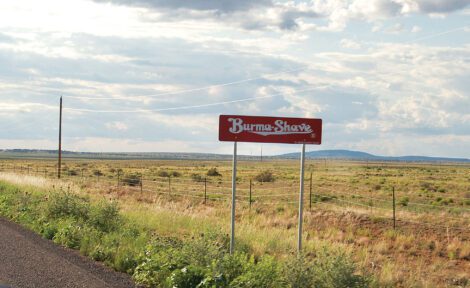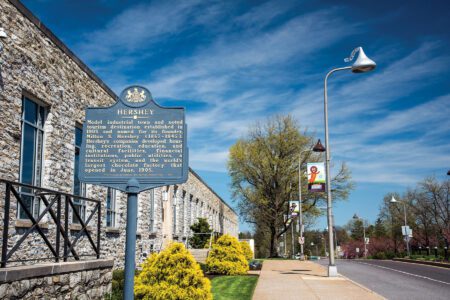“We voyaged by steamer down the Lago di Lecco, through wild mountain scenery, and by hamlets and villas, and disembarked at the town of Lecco. They said it was two hours, by carriage to the ancient city of Bergamo … We got an open barouche and a wild, boisterous driver, and set out. It was delightful. We had a fast team and a perfectly smooth road. There were towering cliffs on our left, and the pretty Lago di Lecco on our right, and every now and then it rained on us.” -Mark Twain, Innocents Abroad
Unlike Mark Twain, I arrived in Lecco, Italy, by taxi after a short train ride from Milan. The small town situated on the shores of Lake Como — or, to be geographically correct, along the banks of the River Adda — was bathed in brilliant sunshine, and the skyline was dominated by the gleaming snowcapped Bergamo Alps across the sparkling water. Taking a stroll alongside the picturesque lake, the air was filled with the sound of flapping sails, small outboard engines, and lots of birds singing their hectic springtime songs as they busied themselves. Twisting alongside the lakeside road there was also a near endless stream of brightly colored motorcycles, which drew my thoughts to my mission for the following day — a visit to the world famous Moto Guzzi factory and museum a few kilometers up the train line in the town of Mandello del Lario.
Having cut my sport bike teeth on the plank that posed for a seat of a Mark I Le Mans, Mandello del Lario was something of a semi-mythical place. Blasting through the English countryside on my fire spitting, racing red, Italian stallion with barely enough money for a cup of tea in my pockets, Mandello might as well have been on the moon. Now, nearly 25 years later, I would finally get the opportunity to walk through the factory gates and step into a history that started back in 1917 during the First World War.
In the beginning …
During World War I, three young Italian pilots were fighting for their country in the Italian Air force: Carlo Guzzi, Giorgio Parodi and a well-known racer of the day, Giovanni Ravelli. As uncertain as life must have been, they still managed to think about what they would do after the war, and the three young men shared a collective dream of building their own motorcycles.
A loan from Giorgio’s father would get them going, and Giovanni would race their new motorcycle, as success on the circuits of Europe would be vital for the new company. In a cruel twist of fate, Giovanni survived the war only to die in an accident just days after the war’s end; but it didn’t stop Carlo and Giorgio from going ahead with their original business plan.
By 1920, the first machine had been built. It had a 500cc single-cylinder engine, and a total of 17 were produced at the new factory in Mandello by the end of 1921. Moto Guzzi was born. Proudly displaying their Air Corps flying eagle on the gas tank in honor of their fallen friend, the pair immediately went racing and took their first win at the torturous Targa Florio. By 1924, Moto Guzzi was a dominant force in the world of motorcycle racing, and by the time they retired in 1957 they had won more than 3,000 races, taken eight world championships and 11 victories at the grueling Isle of Man.
Under the constant supervision of Carlo and Giorgio, there were many highlights in the journey, including the incredible 1955 Otto Cilindri (eight cylinder) Grand Prix race bike by designer Giulio Cesare Carcano, which was the only motorcycle of its type ever built, and was very successful as a racing machine to boot.
After the death of Carlo Guzzi in 1964, financial troubles hit the company, and during an Italian bank take over, Carcano was let go. The innovative and imaginative Lino Tonti would replace him, and under the guidance of the investment group his V7 Sport appeared, followed by the 850GT and the highly successful California range.
Argentinean industrialist Alejandro de Tomaso was the next owner of the company, and he held the reigns until the takeover by Aprilia in 2000. In 2004 the company changed hands again, this time coming under the vast Piaggio umbrella.
With all of this turmoil and change over the decades, it is incredible to think the company still lives and breathes in the same set of buildings it started in, way back in 1921.
The factory and museum today
A sprawling labyrinth of workshops and offices, the factory is huge, and I almost felt like leaving a trail of breadcrumbs when I left one area in case I needed to find my way back. Peering through grimy windows into different rooms revealed testing, tuning, development and even customer service, with all manner of motorcycles in various states of repair. Down one long outdoor corridor I bumped into a mad professor look-alike, who was strapping all sorts of electronic equipment to a standard looking Moto Guzzi with a mock-up fairing in primer. Smiling politely, I thought twice about shooting spy photos. Instead, I meandered off in the direction of the museum, making a mental note to take a tour through the assembly area later.
Talk about stepping back in time! Moving along on creaky wooden floors, I had the place to myself, as I noticed the many places the old plaster walls had been repaired, disguising the neglect that must have occurred through the lean years. I’m sure the museum wasn’t a priority when there was no money in the coffers for day-to-day business. The history, the struggle, the triumphs and disasters, financial takeovers, and glory on the world’s racetracks was all right there in the long, stark, narrow corridors filled with over 150 motorcycles. Walking alone, the light filtering in through the grimy, multi-pane metal windows reminded me of old World War II prisoner of war movies.
Retracing my steps to the gift shop, and pausing to take a snapshot of a race prepped Coppa Italia, I decide to start at the beginning of the chronological display featuring motorcycles from 1921-1945. Entitled, “The Birth of a Legend,” the first room starts with a 498cc single-cylinder machine called a Normale. Based on the first machine produced by Carlo and Giorgio, this simple looking motorcycle produced 8.5hp at 3,400rpm and was capable of over 50mph.
The vast majority of the bikes produced in the early decades were simple, single-cylinder machines, and it isn’t until the 1940s section that twin-cylinder machines begin to appear. My particular favorite was a gnarly-looking 1948 500cc twin racer that produced a healthy 44hp.
Interestingly, the engine layout appears very similar to the early Ducati V-twins, which would come much later. Moto Guzzi did win the Isle of Man Tourist Trophy in 1947, but I am not sure if the winning machine is in the museum, as there was no mention. The bike that won the 1955 350cc World Championship is on display though, and looking at its battered and bruised form made me realize how far modern racing machinery has come.
From past to present to past
Taking a break from the solitude of the museum after a few magical hours, I followed the breadcrumbs over to the assembly line. Entering the large building, the place was alive with energy as the workers (in their bright red boiler suits, sporting various fashion accessories from nose rings to hair gel) attended to the production line. Smiling and joking with each other, they were working on a batch of brand new Grisos. Compared to the thoroughly modern Triumph factory in England, it is a bit old fashioned, but it is definitely very up to date and spotlessly clean and organized. There was a separate line with a handful of Nevadas, but peering into one of the engine rooms containing rows of Griso engines, it is pretty clear where the focus is at Moto Guzzi these days.
Meandering back through the museum after lunch in the staff cafeteria, some of the old bikes looked like the sort of picture your old, senile Aunt might have on the wall. Antiquated and under a bit of dust, a few had small puddles of oil underneath, while others looked as if they had just rolled off a battlefield, tired, weary and in need of rest.
Taking photographs specifically for detail drew me in closer and closer to the beautifully crafted parts: The exposed valve springs of the 1928 Norge, the tiny cylinders of the phenomenal V8, or the neatly restored single equipped with skis on the side. Winding up and down the narrow stone staircases between the floors reminded me of my first high school, with the musty smell that only old buildings seem to have.
And later, taking a sit down in Carlo Guzzi’s chair in the mock up of his office, the sparseness of his workspace was powerful, with simple metal cabinets, a few pictures, and an assortment of relevant engineering books: Like the machines he produced, there were few frills.
Leaving the past behind and arriving amongst the modern era bikes, it felt good to recognize a lot of the featured machines, although there were a lot of small mopeds and scooters I never even knew existed. There was a small display highlighting a MGS-01, a visceral minimalist race bike that I have had the pleasure to ride, along with a Dr. John Daytona 1000 race replica and an old Le Mans 1 endurance race machine with full complement of battle scars. The diversity and range of the machinery is enough to make your head spin. Old Police bikes, off-road bikes, and lots of quirky little single-cylinder transportation specials.
At one point in the tour, I found a 250cc four-cylinder identical to the Benelli Quatro in every detail except the badges on the gas tank. Across the room a pair of Paris-Dakar race machines, based on the dual-purpose Quota, sat next to a Baja version of the same machine.
Here, ancient and modern are side-by-side in the timeless museum, dating all the way back to 1921. The long, rich history of Moto Guzzi is displayed without pomp and ceremony in these long, narrow halls.
A good number of the modern bikes are new, and while a lot of the models are fully restored, there are still plenty of rough, raw original machines in the exact condition they were parked. And as all of these quirks and imperfections grow to be more obvious, the museum itself becomes more charming and delightful.
To the accompaniment of some very eclectic music somewhere into the light, hazy mist that floats across Lake Como, eight hours slipped by, and the hands of the clock made their way to closing time, consigning my day to the past tense.
Hanging on to the last moments, I took one last look at my favorite machine in the museum — the fabulous V8 racer. A machine of elegant, unrefined beauty, with an engine that stunned the world in the 1950s, a few moments alone with the V8 is a ticket back in time — just like a day at the Moto Guzzi museum in Mandello Del Lario alongside the beautiful waters of Lake Como. MC























